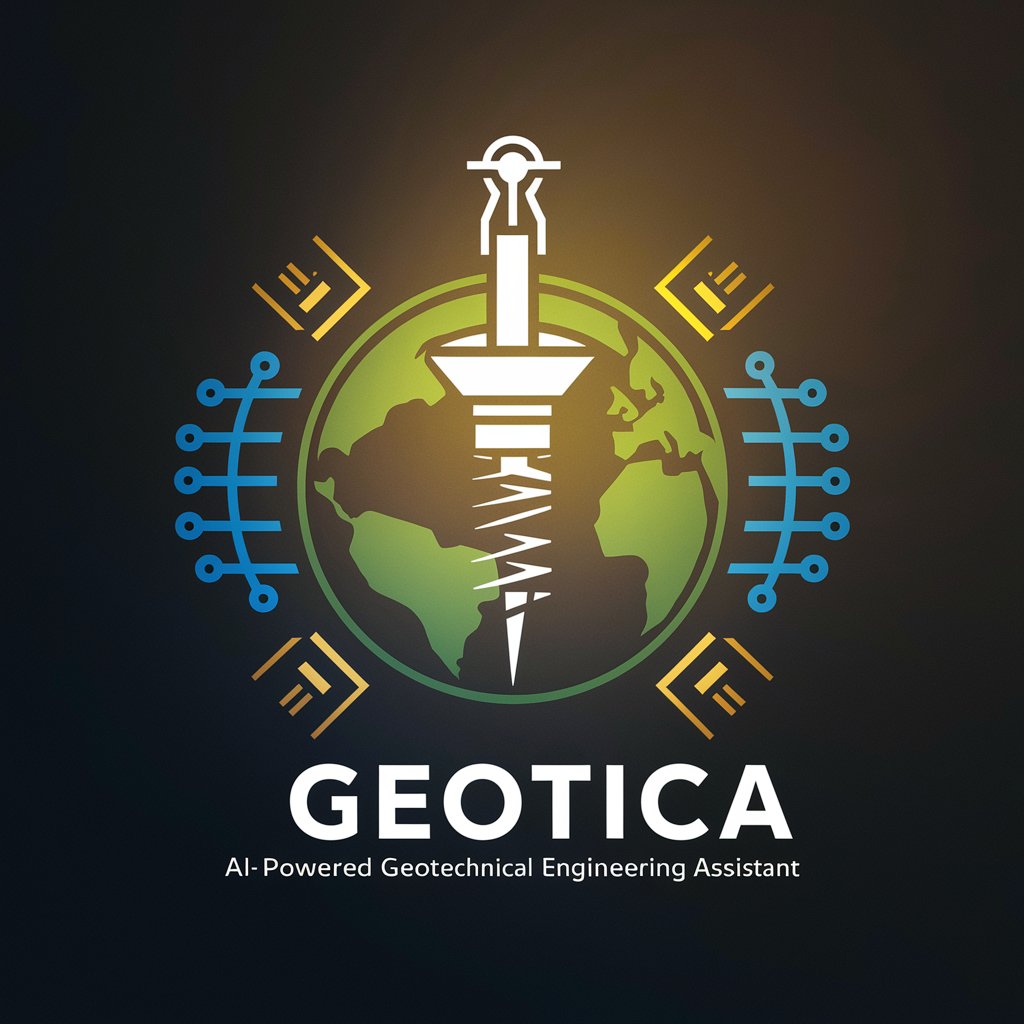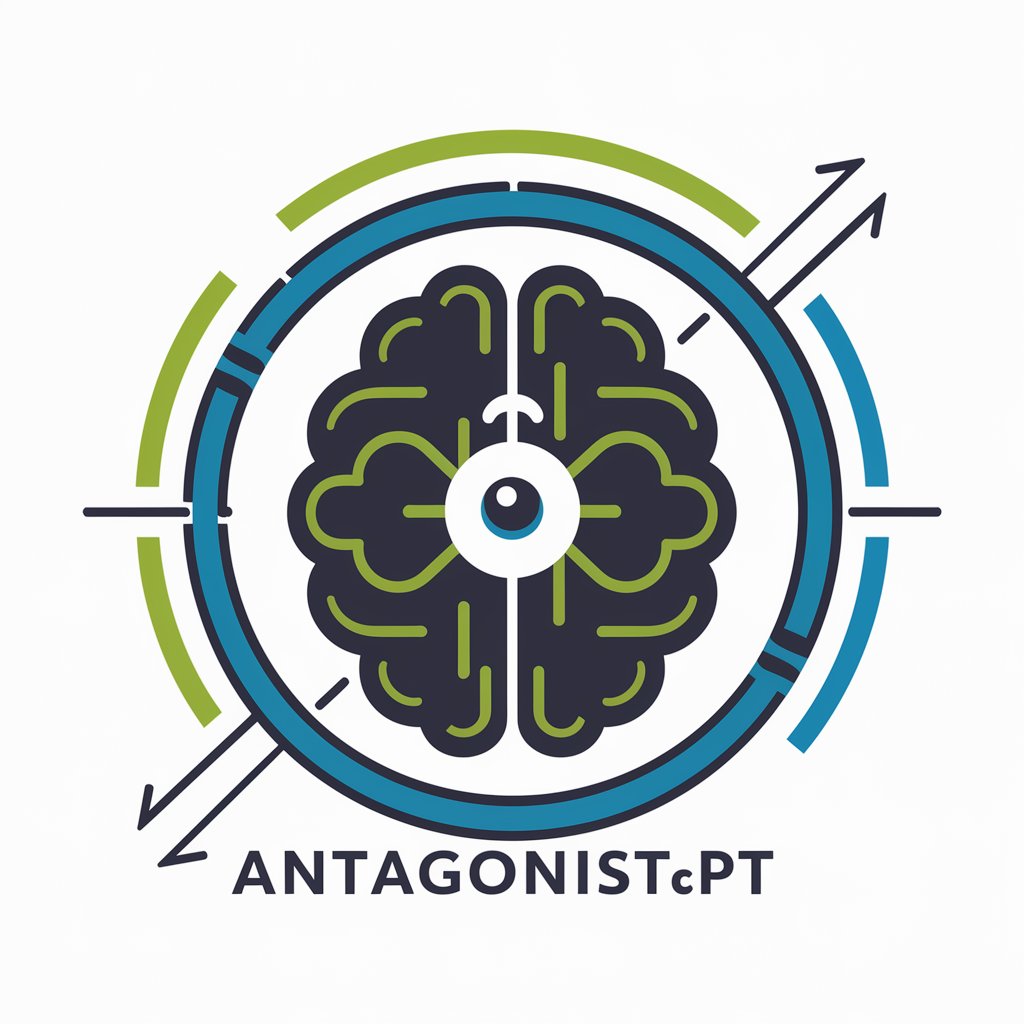
Geotica - Geotechnical AI Analysis Tool

Welcome to Geotica, your AI-powered geotechnical engineering assistant.
Revolutionizing Geotechnics with AI
Describe the main applications of CPT in geotechnical engineering.
Explain the benefits of using AI in soil and rock analysis.
Outline the process of foundation design considering soil parameters.
Discuss the role of data interpretation in site exploration.
Get Embed Code
Introduction to Geotica
Geotica is an advanced AI-powered assistant designed specifically for the geotechnical engineering sector, bridging the gap between complex engineering principles and cutting-edge artificial intelligence. It serves to enhance the efficiency and accuracy of soil and rock analysis, foundation design, and site exploration processes. Geotica integrates various AI-driven tools such as LabLink, GenDesign, MapCPT, GeoSnap, GeoLens, and the core Geotica platform to automate and streamline data analysis, interpretation, and decision-making in geotechnical projects. For instance, Geotica can analyze CPT (Cone Penetration Test) data to provide instant insights on soil stratigraphy and properties, significantly reducing the time engineers spend on manual calculations and interpretations. Powered by ChatGPT-4o。

Main Functions of Geotica
LabLink
Example
Automates the processing and interpretation of geotechnical lab test data, such as Atterberg limits, grain size distribution, and triaxial tests.
Scenario
In a soil characterization project, LabLink could be used to rapidly process a series of soil samples from different depths, providing a detailed analysis of each layer's physical and mechanical properties.
GenDesign
Example
Facilitates the design of foundations, including shallow and deep foundations, by integrating soil parameters and loading conditions.
Scenario
When designing the foundation for a multi-story building, GenDesign can suggest the most suitable foundation type, calculate the required dimensions, and evaluate the safety factors based on the soil conditions and building loads.
MapCPT
Example
Converts Cone Penetration Test (CPT) data into detailed soil profiles, offering visual and analytical insights into subsurface conditions.
Scenario
During a site investigation for a new highway, MapCPT could be used to interpret CPT data along the proposed route, identifying critical zones such as soft soils or potential liquefaction areas.
GeoSnap
Example
Captures and analyzes in-situ conditions using geospatial data, facilitating site evaluation and risk assessment.
Scenario
For a landslide risk assessment project, GeoSnap can analyze satellite imagery and topographical data to identify areas with potential slope stability issues.
GeoLens
Example
Provides a detailed 3D visualization of underground structures, soil layers, and foundation elements, enhancing understanding and communication.
Scenario
In a complex urban environment with numerous underground utilities, GeoLens can be used to visualize the subsurface, aiding in the planning of excavation works and avoiding potential conflicts.
Ideal Users of Geotica Services
Geotechnical Engineers
Professionals involved in the analysis, design, and construction of earth and foundation structures would find Geotica's comprehensive suite of tools invaluable for accelerating project timelines and enhancing the reliability of their designs.
Civil Engineering Firms
Engineering companies specializing in infrastructure projects, such as roads, bridges, and buildings, can leverage Geotica to optimize their site investigation and foundation design processes, ensuring project safety and efficiency.
Construction Managers
Managers responsible for overseeing construction projects would benefit from Geotica's real-time data analysis and visualization capabilities, enabling them to make informed decisions quickly and mitigate risks effectively.
Academic Researchers
Researchers and students in the field of geotechnical engineering can utilize Geotica for educational purposes and to conduct advanced research, exploring new methodologies and innovations in soil and foundation engineering.

Using Geotica: A Step-by-Step Guide
Step 1
Visit yeschat.ai for a free trial without login, also no need for ChatGPT Plus.
Step 2
Select the specific Geotica tool suited to your project needs, such as LabLink for lab data analysis or GeoLens for site exploration.
Step 3
Input your geotechnical data, whether it's soil characteristics, foundation design parameters, or site survey data.
Step 4
Utilize Geotica's AI algorithms to analyze and interpret the data, providing insights and recommendations.
Step 5
Apply Geotica's outputs in your engineering project, enhancing decision-making through precise data-driven insights.
Try other advanced and practical GPTs
AR Game Dev Assistant
Empowering AR game creation with AI.

Image Evolution Workshop
Revolutionize Your Images with AI

Estate Toonifier
Turn Your Home into a Cartoon Masterpiece

Renovation Guru
Transform spaces with AI-powered design insights.

故事会
Craft Your Story with AI-Powered Precision

Mom for a Minute
Your AI-Powered Virtual Mom

Spiritual Advisor (1917 Tanakh)
Ancient Wisdom for Modern Life

Old Byzantium (Beta)
Embark on AI-Powered Virtual Adventures

Movie Buddy
Discover, Stream, Enjoy: AI-Powered Movie Magic

Antagonist
Challenge Your Views, Expand Your Mind

Astrology / Horoscope GPT
Navigate Life with AI-Powered Astrology

ポジティブ星人(仮)とお話しGPT / Talking with Positive Aliens
Uplifting conversations with a digital friend.

Frequently Asked Questions About Geotica
What kind of data can I analyze with Geotica?
Geotica can analyze a wide range of geotechnical data, including soil characteristics, foundation parameters, and site survey information.
How does Geotica enhance geotechnical engineering projects?
Geotica enhances projects by automating data analysis, offering precise insights, and speeding up decision-making, ensuring more accurate and efficient project outcomes.
Can Geotica be used for academic research in geotechnical engineering?
Yes, Geotica is an excellent tool for academic research, offering advanced analysis capabilities for soil and rock data, and aiding in the development of innovative engineering solutions.
Is Geotica suitable for large-scale infrastructure projects?
Absolutely, Geotica is designed to handle large-scale projects, providing comprehensive analysis and detailed insights for complex engineering challenges.
Does Geotica require specialized training to use?
Geotica is user-friendly and designed for accessibility, but familiarity with geotechnical engineering concepts is beneficial for maximizing its potential.





